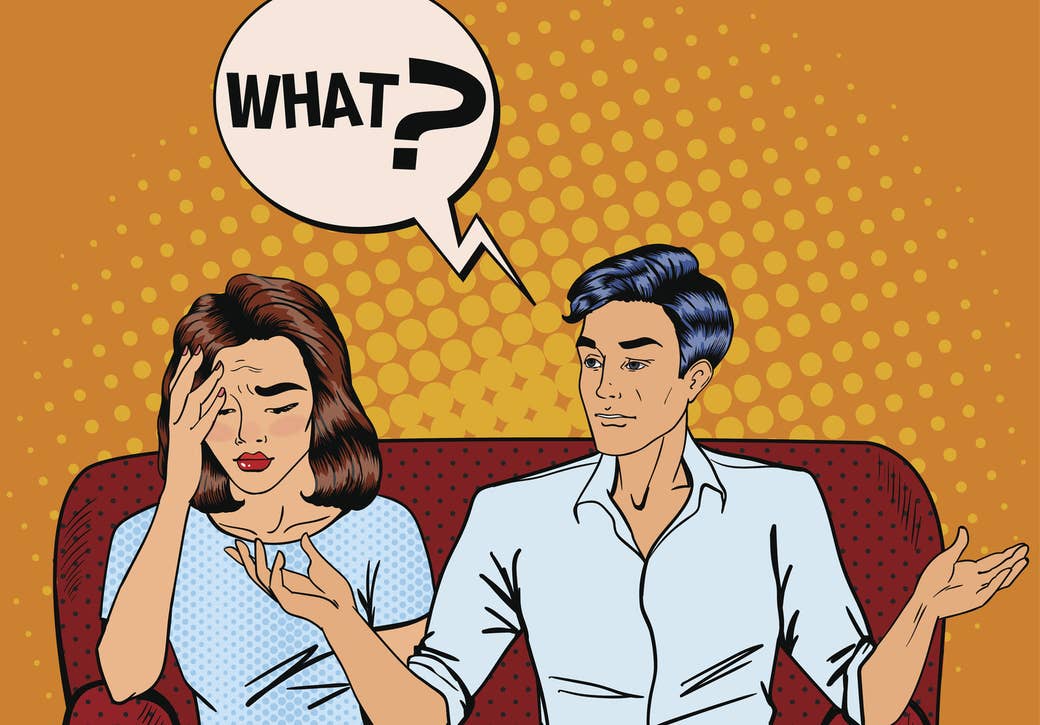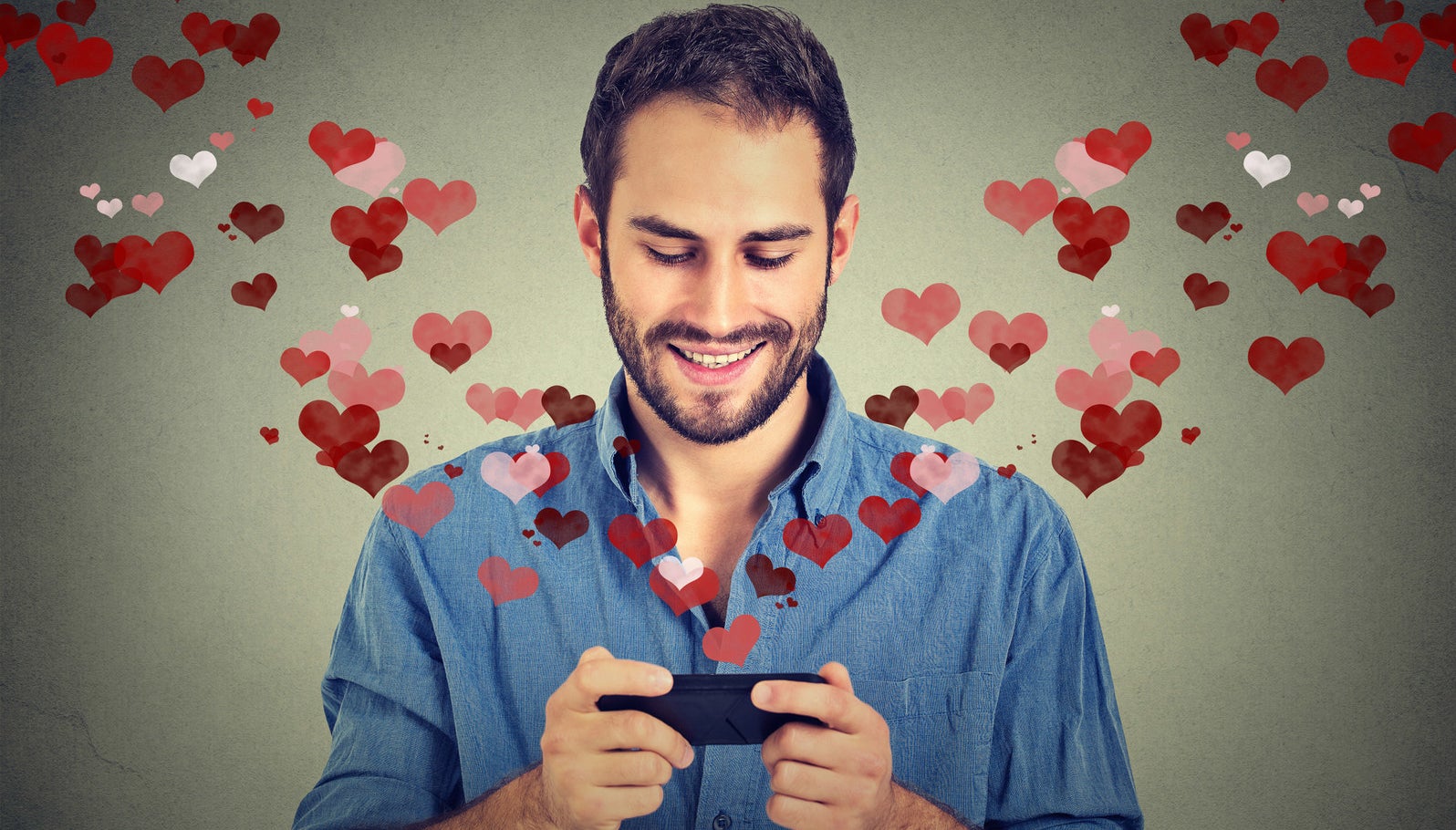
I used to be terrible at Tinder — but for a few weeks this summer, I was pretty good. Women responded to my messages. Our chats went deeper than usual. Previously stalled discussions were suddenly revived and I was right-swiped with increasing frequency. I began to understand my matches in a way I hadn’t previously, but not because of anything I'd done. My Tinder messages were being composed by a woman who also set up my profile. And I was using Tinder’s on-staff sociologist’s input to refine my approach.
I handed over my account to my colleague, Jessica Misener, on a hunch (correct) that I wasn’t doing things right on Tinder. And while Jessica didn’t really need the help, I took over her account as well. We embarked on our great switcheroo in an attempt to get to the bottom of what makes Tinder tick, customizing each other’s profiles to what we thought people of our gender wanted, releasing those accounts into the wild, and then comparing the results to our past luck.
We swapped accounts on the condition that no message could be sent without the explicit approval of its real owner — this was a quest to understand the inner workings of the platform, not dupe people. And, when we were done, we brought our findings to Tinder, which reviewed them and — based on its own research including some previously unreleased data — told us what we'd done right and wrong. Spoiler: I had a lot to learn. And judging from the Tinder profiles we saw, you probably do too.
Downloaded by more than 100 million people, Tinder is responsible for some 1.5 million in-person dates each week, according to its creators. It’s helped to normalize “meeting online.” Tinder did this with an ingeniously simple swipe “right for like”/ "swipe left for dislike” vetting process, connecting people only when there is mutual interest. Its soaring popularity has helped revolutionize modern dating, shifting us from finding love via chance to finding it via algorithm.
Wearing a hat in your Tinder profile pic? That’ll hurt your chances by 12%.
The secrets of Tinder's code lie in the hands of people like Jess Carbino, a Tinder employee with a sociology PhD from UCLA. She has a lot of insight into what works on Tinder and what doesn't. For instance: Wearing glasses in your profile picture, whether for vision or sun, decreases your chances of being right-swiped by 15%. And a hat? That’ll hurt your chances by 12%.
“It's really important for people to able to glean a great deal about your face, which indicates things beyond attractiveness,” Carbino explained in a phone interview from Tinder’s Los Angeles headquarters last week. Tinder is willing to share a good deal of this data because, at the end of the day, it wants people to find satisfying matches. And, if you use Tinder, you probably want more matches too. So take your damn hat off. And, while you’re at it, those shades need to go too.
In Trusted Hands

Looking through the men showing up on Jessica’s Tinder account, I saw many dudes presenting themselves with blurry pictures, mirror selfies, hats, nowhere-looking gazes, and other off-the-charts terrible selfies. When I saw a guy with a clear picture, smiling and looking toward the camera, I instantly swiped right.
When Jessica set up my profile, she chose a picture of me looking sideways to start, and then followed with a few looking straight at the camera. A week in, thinking about that man with the straightforward smile, I suggested we switch up my own profile. We chose a photo I didn’t love, but where I looked straight at the camera and smiled. It worked significantly better than my previous profile pic.
“Individuals who are front facing are 20% more likely to be swiped right on."
The forward-facing smile was the right move, according to Tinder’s Carbino. “Individuals who are front facing are 20% more likely to be swiped right on, relative to their counterparts who are facing sideways or not showing themselves,” Carbino said. Even though I felt the smiling picture was worse than any other, it made a big difference: You are 14% more likely to be swiped right on if you smile on Tinder, Carbino said.
After Jessica landed a few matches on my behalf, I watched in amazement as she crafted thoughtful, personalized messages to each. My opening message is perhaps best described as “How’s it going?” Jessica describes hers as “Not just, ‘Oh cool you're from North Carolina? I like Asheville a lot,’ but: 'Oh you're from North Carolina? I've always wondered if the Carolinas have a rivalry about which is better. like South Carolina is OBVIOUSLY cooler but North Carolina is literally on top of it, which seems significant to me.'"
Jessica’s method proved effective. Conversations kicked off with thoughtful messages that were far richer than my usual “Hey,” “Sup,” “Nm, U?” variety. And Tinder’s data seems to bear this out. Carbino said Tinder is conducting a messaging analysis study, and its initial results indicate more thoughtful messages are more likely to generate responses. You can also always send a GIF, which is 30% more likely to get a response, according to Carbino.
Viewing Tinder from my colleague Jessica’s vantage point, I didn’t need any special conversational tactics. If anything, the biggest challenge was weeding people out.
Stampede

Running Jessica’s account felt like watching dozens of men attempting to run through the same tiny door at once. It was overwhelming. As I swiped right, a pattern emerged: Match. Match. Match. Match. Message. Message. Message. Message. These guys meant business. They were relentless.
Watching them in action, I began to rethink one of my core Tinder principals: Never double-text. Sending a message, waiting, and sending another message despite no response had long been no-go territory for me. It felt needy, and a bit delusional. If someone was interested, they’d respond. If not, they wouldn’t. But as I witnessed the volume and pace of messages hitting Jessica’s Tinder, I very quickly saw the folly of my ways.
Double-texting works, said Carbino, who calls it re-engagement. “The idea of re-engagement, if done in a way that's appropriate, can be quite effective,” she told me. “You can say something along the lines of, 'Hey, it's time to step up your Tinder text game' and make a joke out of it to re-engage them and to try to further the conversation along in a way that's more meaningful.”
On Tinder, you can also use a "Super Like" button once every 24 hours to signal more interest than the ordinary like, but the people using this feature felt a bit off to me, so I started swiping left and rejecting them all out of habit. That wasn’t a normal behavior. Super Likers, according to Tinder, are three times more likely to match, and their conversations typically last 70% longer than those of non–Super Likers.
Super Like or not, you may want to go for the real-world encounter as early as possible. People who meet in person via Tinder typically do so within two to seven days of matching, according to Carbino.
Tinder God Emerges

“I always said great advertising should be like dating.”
When you first sign up for Tinder, a text overlay appears on the app urging you to “Swipe more to help us learn your preferences. The more you swipe, the better our recommendations!” The prompt is subtle, and it’s also the most prominent indicator that Tinder sorts the profiles it shows you via an algorithm — a mathematical formula that pulls in a number of data points and makes decisions about who comes next.
The keys to Tinder’s algorithm are held by Dan Gould, a former advertising technology executive who spent the early part of his career attempting to match the right ad to the right person at the right time — now he’s doing it with people. That a former ad-tech exec now holds a power position at a dating company says a lot about the role of algorithms in romance today. “I always said great advertising should be like dating,” Gould told me. “If advertising works perfectly, it would be like finding that great partner for you. It would find the right thing, at the right time, at the right price, and maybe something you didn’t even know.”
According to Gould, Tinder's algorithm gives a lot of weight to the choices you make while setting preferences. Distance ranges, gender, and age preferences — all these things need to match up before Tinder will show you a potential match. Two other critical factors are distance and recency. Distance is straightforward: Being closer gives you an edge. But “active time,” i.e., recency, is more intriguing. “People who have been active recently are more likely to come back soon and interact with other people.” Gould said. “While I probably shouldn’t say how you can game the system, the one thing that a person can really do to appear to a lot more people and get more matches is to be active recently. If I were trying to get more matches I would open the app every hour and just swipe a little bit.”
Swipe Life

In their book Modern Romance: An Investigation, the comedian Aziz Ansari and New York University sociology professor Eric Klinenberg describe asking a woman to project her OkCupid inbox on a screen in an LA comedy club. “The moment we put her inbox up on the screen, you could see every man in the room just deflate,” Klinenberg said in a recent phone interview. “They suddenly realized what they were up against.”
The draw of that choice is so powerful that Seattle-based Ricky Burnett, founder of a company called Project Attraction, a dating coaching service that promises to help men “become the confident, bad ass guy that women obsess over," said he sees a lot less competition when trying to meet someone in real life. “I consider it to be a lost art these days,” he said. “You kind of put people in awe when you just walk up to them and say ‘hi.’”
Proliferation of choice can have negative consequences as well. With so many potential matches to swipe on, they all become a bit more...disposable. “Go back to [the pre-Tinder] era," said relationship psychologist Karen Sherman. "If you didn’t meet somebody in college then what the hell were you going to do? Because then you were pretty much out of possibilities. Now, so what?
For Carbino, algorithmically assisted courtship is a clear net positive. “There's so much data out there that suggests that individuals who meet their partners online have more satisfactory relationships and are more likely to get married faster, relative to individuals who meet offline,” she said.
Klinenberg is of a similar opinion. He likes to tell a story of how he and Ansari once asked a “pretty average looking” guy for a look at his dating inbox. The guy, Klinenberg said, had messages from women who “30 years ago, if he had gone to a bar and they had given him their phone number, he would’ve gone crazy, it would’ve been the greatest night of his life.” There's a lesson in that inbox: “There’s a lot of volume. Even if that guy was striking out 95% of the time, it’s a whole lot easier to start flirting with someone and ask them out online, than it is in person.”
For me, the week I swapped Tinder accounts with Jessica helped answer a question I'd long struggled with when using the app: "What did I do wrong?" Now, I know, and knowledge is power.
Now if you'll excuse me, I have some swiping to do.

